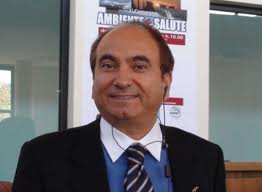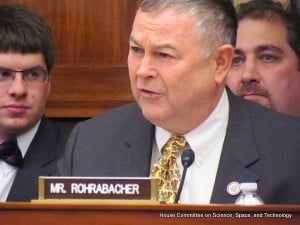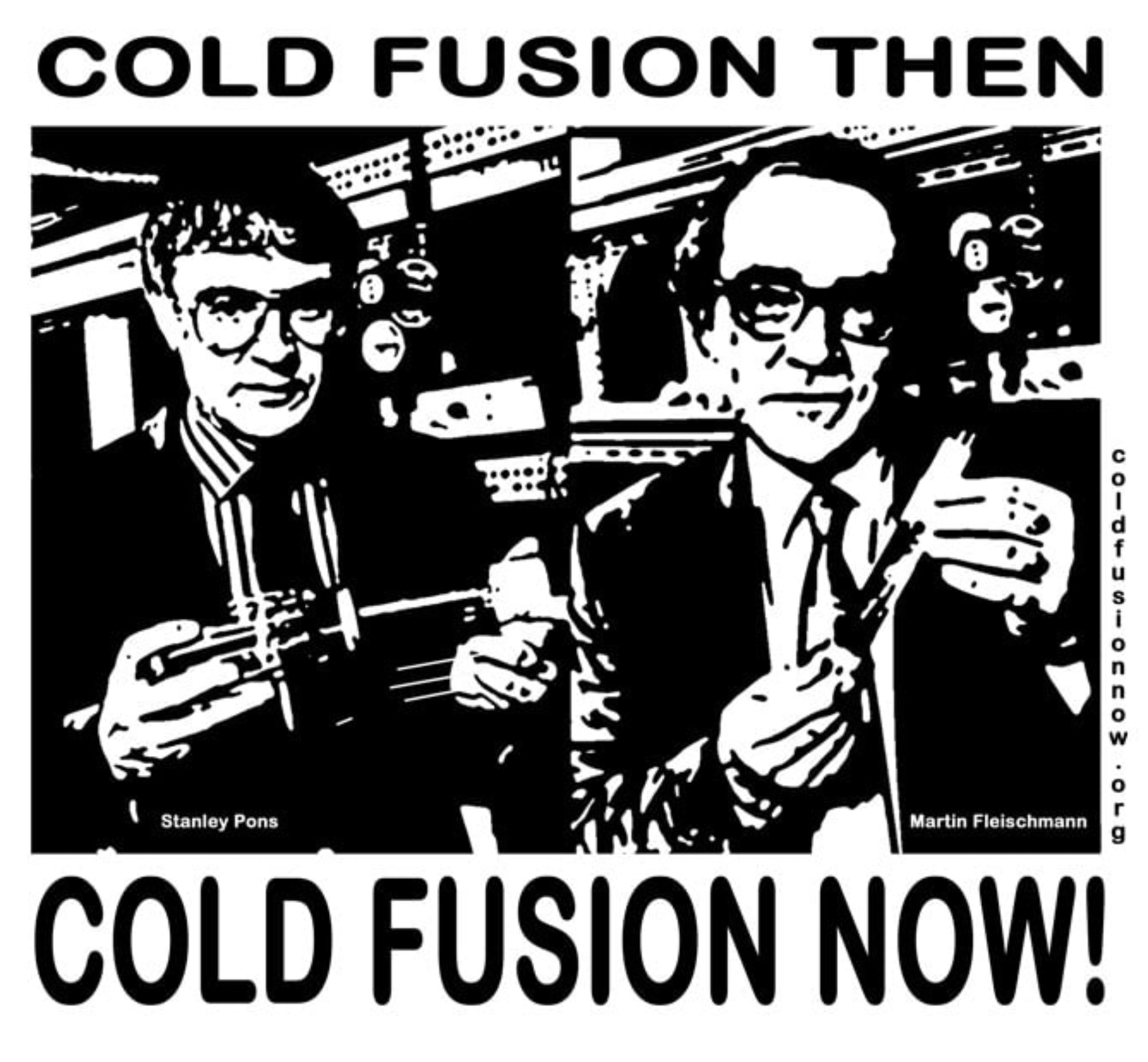Political support would have been crucial two decades ago in developing the basic science of cold fusion energy by procuring funding for a coordinated plan of research.
In Peaking of World Oil Production: Impact, Mitigation, & Risk Management, Robert Hirsch and others for the Department of Energy determined that twenty years was the smallest time at which mitigation for the effects of peak oil would allow for a smoother transition to a non-fossil fuel based economy. Less than that, and the gap between the end of easy access to fossil-fuels and a new energy technology would guarantee alot of pain.
Well Peak Oil is here, and our society has collectively decided to ignore the reality of Hubbert’s Curve. As a new technology is being born in the workshops of independent scientists, what can political support do?
Legislators will provide the means for new energy companies to operate easily, and deliver revolutionary new energy products to an eager public as quickly as is technically and safely possible, or, they can make it difficult for these companies to operate and delay product distributions through excessive regulation.
Who in politics is supportive of cold fusion?
In Italy, where the first commercial cold fusion technology was demonstrated just last year, there is also a long history of parliamentary support for cold fusion. In 1989, after Drs. Fleischmann and Pons‘ announcement, “Dr. Francesco Scaramuzzi, a mathematician and physicist at the National Agency for Nuclear and Alternative Energy said he and a team of eight other scientists had forced deuterium, a heavy isotope of hydrogen, in the form of gas to fuse at extremely low to room temperatures”, confirming low-energy nuclear reactions LENR. [read Italian Researchers Report Achieving Nuclear Fusion NY Times 1989/04/19]
“They were accompanied by a large number of colleagues and two cabinet ministers” when they made their announcement at the Nuclear Agency’s headquarters in Rome.”, the report quoted. Since then, ENEA, the Italian National Agency for New Technologies, Energy and the Environment has continued research, collaborating with labs around the world.
But right after the initial flurry of activity in March 1989, many politicians all over the world spoke about this new form of energy, only to be muzzled in the ensuing months. For two decades, political support lay dormant, until Andrea Rossi demonstrated his prototype Energy Catalyzer in at the University of Bologna in January 2011, igniting public interest and a renewed, though timid, political class.
 More recently in Italy, Parliamentarian Domenico Scilipoti addressed a letter to Italian ministers asking “WHETHER The prime minister and the other ministries to whom my questioning is directed do not intend to adopt suitable measures, even laws, aiming at an effective and quick opening towards these researches” according to a translation on lenrforum.eu. [original][gootrans] [lenrforum.eu]
More recently in Italy, Parliamentarian Domenico Scilipoti addressed a letter to Italian ministers asking “WHETHER The prime minister and the other ministries to whom my questioning is directed do not intend to adopt suitable measures, even laws, aiming at an effective and quick opening towards these researches” according to a translation on lenrforum.eu. [original][gootrans] [lenrforum.eu]
Why are Italians so keen on the Energy Catalyzer?
“If verified, [this] could quickly resolve all issues relating to the production of electricity at low cost without damage to the environment, allowing the country to become an energy exporter of electricity at very low cost, and with the further possible advantage in developing the engineering unit patented by engineer Rossi or other scientists, to free Italy from dependence on supplies of oil, coal and other energy purchases of electricity, with huge environmental and budget benefits.” –Domenico Scilipoti, translation
Greece is the home of Defkalion Green Technologies, licensors of the Hyperion steam generator, a product which will compete with the Ecat. The technology itself is owned by Praxen Defkalion Green Technologies based in Cyprus.
Last year Defkalion Board member and University of Bologna, Italia Professor Christos Stremmenos spoke of “… mediation with the Greek government to make an industrial plant possible”. The result was Defkalion Green Technologies.
Then Prime Minister George Papandreou was himself a supporter of cold fusion technology. Since resigning last year after turmoil over proposed extreme government budget cuts, officials there are still behind the technology, and this week’s elections will most likely not change that sponsorship.
Stremmenos was quoted as saying, “Even the opposition has now asked to be informed on this issue. Therefore in Greece this matter is treated without prejudice, no one is uncommitted.” [read]
The government of Japan had formal commitment to cold fusion research in the nineties. In 1993, a New Hydrogen Energy Laboratory had been set up in Japan with $25 million from the Ministry of International Trade and Industry MITI, to be distributed over 5-years. That was accomplished, but the lab closed after that first five years.
The final report on the project summarized the reason. “No apparent excess heat was observed over instrumentation limits after about 500 of electrolysis experiments by some kinds of well-developed cells”. The conclusion was that New Hydrogen Energy was not ready to be commercialized and still within the realm of scientific research. But no other ministry picked up the check.
Ironically, it is just such research that needs federal support. Private industry looking for a return on investment eschews basic scientific research, and will only step in when a commercial product is imminent. Had cold fusion benefited from federal funding over the past two decades, labs could have passed to private enterprise a fully-developed science that might be producing usable commercial technologies based on clean, portable, and safe energy right now.
There is a long list of official government sponsorship by other countries around the world. But here in the US, the striking emotional backlash that has left cold fusion, and a whole host of new energy technologies, out of the energy portfolio continues institutionally as it has for more than two decades.
Who in the parochial US government is willing to speak out for cold fusion?
Just about zero.
But there are some candidates beginning to bring this issue out in the open again.
Randy Hekman is a candidate for US Senate from Michigan, looking to unseat heavily-funded Debbie Stabenow. There are many differences between the two candidates, the biggest difference being Randy Hekman supports LENR low-energy nuclear reaction research. [visit]
He was a member of the 2004 team including Michael McKubre, Peter Hagelstein, David J. Nagel, and Talbot Chubb that prepared a report in 2004 for the Department of Energy Review. Ultimately, the panel claimed that clearly-defined experiments should be funded, but since then, this field has received $0. [read 2004 DoE Review History]
Though still a candidate, Hekman’s strong commitment to LENR would be expected to continue should he win.
Mitt Romney is running for President of the United States against incumbent Barack Obama. As a candidate, he has mentioned cold fusion in an interview with the Washington Examiner. He did not show any in-depth knowledge, but just mentioning the words was a clue that he’s been informed by someone about recent news. [read]
In the interview, Romney also connected funding basic science and economic development:
“But basic science, in my view, is a way that research can encourage our entire economy. And so, for instance, in Michigan, some years ago — I think it was in 2007 — I spoke there and said, you know, I think we ought to embark upon an effort to do analysis on energy research, transportation research, materials research. But again, basic research which could then be either purchased by or licensed by companies foreign and domestic.”
Bruce Tarr is a Massachusetts State Senator and the first serving US legislator listed so far. He has visited MIT Massachusetts Institute of Technology’s live demonstration of JET Energy’s NANOR device and spoken with researchers Mitchell Swartz, Peter Hagelstein, and Brian Ahern about the current research there. [read]
Tarr has also hosted inventor Andrea Rossi to discuss energy, and opportunities. As a State Senator, Tarr’s responsibility to economic development follows him closely. With state budgets shrinking amid an ongoing financial crisis, Tarr appears to be looking ahead at the opportunities for a renewed economy based on cold fusion technology. [read]
Bob Kerrey serves in the US Senate representing Nebraska. There is no record of him publicly speaking out for cold fusion, but he was recently outed in an article by the Washington Examiner highlighting his large consulting fees, one of which was “$800,000 in consulting fees in 2011 from the Sidney Kimmel Revocable Trust to help an Israeli company research cold fusion.” [read Kerrey the wealthiest Senate candidate in Nebraska Examiner 2012/04/27]
The information that Kerrey has worked with Energetics Technologies on behalf of Sidney Kimmel, the billionaire funding the University of Missouri’s LENR program, is an important indication of the behind-the-scenes activity just starting to percolate among those with financial power.
 Sitting on the Congressional Committee on Space, Science and Technology is also Dana Rohrabacher, a long-time representative who was serving in 1989 when Drs. Fleischmann and Pons were under fire. Back then, Representative Rohrabacher was not sure whether or not the claims were true, but felt that it should be pursued and sorted out.
Sitting on the Congressional Committee on Space, Science and Technology is also Dana Rohrabacher, a long-time representative who was serving in 1989 when Drs. Fleischmann and Pons were under fire. Back then, Representative Rohrabacher was not sure whether or not the claims were true, but felt that it should be pursued and sorted out.
In an editorial for the Los Angeles Times on June 18, 1989, he wrote how wrong it was to attack Drs. Fleischmann and Pons for a discovery, that if confirmed, “would usher not only science but all aspects of modern life into an era of growth and improvement that mankind has not experienced since the Industrial Revolution”. [read Turkey Today, Genius Tomorrow: Cold Fusion Attempt Has Noble Lineage in Science LA Times 1989/06/17]
Rohrabacher has since been silent on cold fusion. Cold Fusion Now has sent several mailings of letters, along with Cold Fusion Now stickers, to his Energy sub-committees, with no response.
However, our last mailing requesting hearings on the funding practices of Advance Research Projects – Energy ARPA-E may have helped to spark the subsequent hearings held in January 2012 which brought heads of DoE and ARPA-E to the chamber for questioning. [read]
ARPA-E then released funding for ‘Transformative Energy Technologies’. It is not known if any projects relating to cold fusion or LENR were funded. [read]
In 1992, researcher, author and Infinite Energy magazine founder Eugene Mallove had questioned then-Presidential-candidate Bill Clinton in Concord, New Hampshire about cold fusion. Candidate Clinton admitted “knowing that scientists in Arkansas were ‘stonewalled’ by the US Department of Energy” and “promised to do something about investigating cold fusion if elected”.
He never did.
Arthur C. Clarke asked the Clinton President’s Office to contact Infinite Energy requesting a brief on the matter, near the end of President Clinton’s eight-year reign in 2000. Mallove responded with a comprehensive memo which included this quote:
“… If we only had a way to tap this fusion energy safely and cheaply, the world’s energy problems would be over; most if not all environmental problems would be well on their way to solution. If we could find a way to release this fusion energy benignly without deadly radiation, and on a small scale, rather than in the stadium-like tokamak thermonuclear fusion reactors–smaller, dysfunctional prototypes of which are being tested at fantastic cost at Princeton, MIT, and elsewhere–a millennial revolution in energy technology would break out.
It would mean an age in which the recurring cost of energy production would approach zero, since the heavy hydrogen is virtually free. The scope of that revolution would dwarf today’s Internet-World Wide Web upheaval. The age of “free information” would have a partner: the age of virtually free energy! It may surprise you to learn that the energy discovery described above was made in the United States in the early 1980s, announced in 1989, and subsequently confirmed by solid published scientific research–some of that by Federal laboratories. …” –Eugene Mallove
Read the full text of President Clinton’s Cold Fusion Memo here.
The same memo was copied to President George W. Bush as well.
A new energy technology is being developed by independent scientists and inventors without the benefit of federal funding. Ignorance of this from our political class is detrimental to the future of our species as we are in the throes of an irreversible decline in easy access to fossil fuels.
We need explicit plans to move this research and technology quickly into use.
If you call yourself an environmentalist or if you call yourself a free-enterprise entrepreneur, a social activist or a parent; for anyone who desires a free and peaceful future, we ask you to start talking about what’s going down on the new energy front with your representatives, and stay informed, so you can demand of your politicians the actions necessary to bring this technology forward.
“Forward”.
President Obama’s new campaign slogan.
Yes. Let’s move forward for
Cold Fusion Now!
Related Links
Cold fusion economy supported by Greek government by Ruby Carat May 7, 2011
US Senate candidate Randy Hekman puts LENR first by Ruby Carat December 20, 2011
Republican candidate Mitt Romney speaks out for cold fusion by Ruby Carat December 9, 2011
Masachusetts state Senator Bruce Tarr visits Still-Operating JET Energy NANOR Demo by Ruby Carat April 19, 2012
Letters to Congressional Energy Sub-committees repeat hearing request by Ruby Carat November 13, 2011
PEAKING OF WORLD OIL PRODUCTION: IMPACTS, MITIGATION, & RISK MANAGEMENT by Robert L. Hirsch, SAIC, Project Leader, Roger Bezdek, MISI, Robert Wendling, MISI February 2005
Energy Catalyzer Home
Defkalion Green Technologies Home











